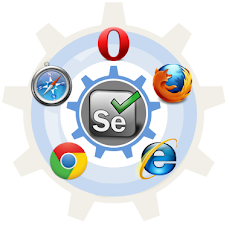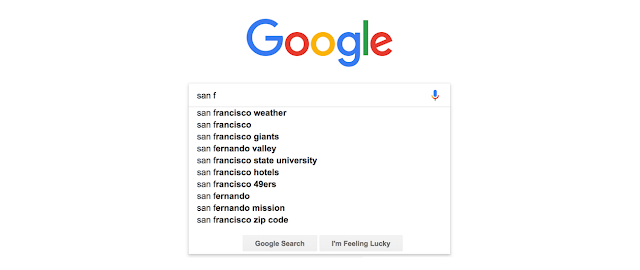Arrays and Strings in C: A Complete Guide for Beginners
1. Arrays and Strings in C
Arrays and strings are fundamental data structures in computer programming. In C, arrays and strings are implemented as contiguous blocks of memory that can be accessed using pointer arithmetic.
In this tutorial, we will cover the basics of arrays and strings in C, including how to declare and initialize arrays, how to access array elements, how to work with multidimensional arrays, and how to manipulate strings using standard library functions.
Table of Contents
1. Arrays and Strings in C
2. Declaring and Initializing Arrays3. Accessing Array Elements4. Working with Multidimensional Arrays5. Manipulating Strings
2. Declaring and Initializing Arrays
An array is a collection of elements of the same type that are stored in contiguous memory locations. You can declare an array in C using the following syntax:
ctype name[size];
Here, type is the type of the array elements, name is the name of the array, and size is the number of elements in the array. For example, you can declare an integer array with 5 elements as follows:
cint numbers[5];
You can also initialize an array at the time of declaration using a comma-separated list of values enclosed in braces {}. For example:
cint numbers[5] = {1, 2, 3, 4, 5};
In this case, the array numbers is initialized with the values 1, 2, 3, 4, and 5.
If you don't specify the size of the array when you declare it, the compiler will automatically determine the size based on the number of elements in the initialization list. For example:
cint numbers[] = {1, 2, 3, 4, 5};
In this case, the size of the array is automatically determined to be 5.
You can also initialize an array with all its elements set to zero using the following syntax:
ctype name[size] = {0};
For example:
cint numbers[5] = {0};
This initializes all the elements of the numbers array to 0.
3. Accessing Array Elements
You can access individual elements of an array in C using the following syntax:
carray[index]
Here, array is the name of the array, and index is the zero-based index of the element you want to access. For example, to access the first element of the numbers array declared earlier, you would use the following code:
cint firstNumber = numbers[0];
This assigns the value of the first element of the numbers array to the variable firstNumber.
You can also assign a new value to an individual element of an array using the same syntax. For example:
cnumbers[0] = 10;
This assigns the value 10 to the first element of the numbers array.
You can use a loop to access all the elements of an array sequentially. For example:
cfor (int i = 0; i < 5; i++) {
printf("%d\n", numbers[i]);
}This loop prints all the elements of the numbers array to the console.
4. Working with Multidimensional Arrays
A multidimensional array is an array of arrays, where each element in the array is also an array. Multidimensional arrays can be used to represent tables, matrices, and other data structures that require more than one index to access their elements.
In C, you can declare and initialize multidimensional arrays using the following syntax:
cssdata_type array_name[size1][size2]...[sizeN] = { { ... }, { ... }, ... { ... } };
Here, data_type is the data type of the elements in the array, array_name is the name of the array, and size1, size2,..., sizeN are the sizes of the array in each dimension.
For example, the following code declares and initializes a two-dimensional array named matrix with three rows and four columns:
cssint matrix[3][4] = { {1, 2, 3, 4}, {5, 6, 7, 8}, {9, 10, 11, 12} };
To access an element in a multidimensional array, you need to provide the indices for each dimension of the array. For example, to access the element in the second row and the third column of the matrix array, you can use the following statement:
lessint element = matrix[1][2]; // Accessing the element in the second row and third column
You can also use loops to iterate over the elements in a multidimensional array. For example, the following code uses nested loops to print the elements of the matrix array:
scssfor(int i = 0; i < 3; i++) {
for(int j = 0; j < 4; j++) {
printf("%d ", matrix[i][j]);
}
printf("\n");
}This code will print the following output:
1 2 3 4 5 6 7 8 9 10 11 12
You can create multidimensional arrays with any number of dimensions. For example, the following code declares and initializes a three-dimensional array with dimensions 2x3x4:
cssint three_d_array[2][3][4] = {
{
{1, 2, 3, 4}, {5, 6, 7, 8}, {9, 10, 11, 12}
},
{
{13, 14, 15, 16}, {17, 18, 19, 20}, {21, 22, 23, 24}
}
};To access an element in a three-dimensional array, you need to provide three indices: one for each dimension of the array. For example, to access the element in the second row, third column, and fourth "depth" of the three_d_array array, you can use the following statement:
lessint element = three_d_array[1][2][3]; // Accessing the element in the second row, third column, and fourth "depth"
You can use nested loops to iterate over the elements in a multidimensional array with any number of dimensions.
5. Manipulating Strings
In addition to arrays, another important data type in C is the string. A string is an array of characters terminated by a null character ('\0'). Strings are commonly used for storing and manipulating text data.
To declare a string in C, you can use the char data type followed by the string name and a pair of square brackets to indicate the size of the array. For example, to declare a string named str with a maximum size of 100 characters, you would use the following syntax:
cchar str[100];
In this case, the size of the array is automatically determined by the size of the string.
Here are some common string functions in C:
strlen(): returns the length of a stringstrcpy(): copies one string to anotherstrcat(): concatenates two stringsstrcmp(): compares two strings
Here's an example that demonstrates the use of some of these functions:
c#include <stdio.h>
#include <string.h>
int main()
{
char str1[100] = "Hello";
char str2[100] = "world";
char str3[100];
int len;
// Concatenate str1 and str2
strcpy(str3, str1);
strcat(str3, " ");
strcat(str3, str2);
printf("Concatenated string: %s\n", str3);
// Find length of str3
len = strlen(str3);
printf("Length of str3: %d\n", len);
// Compare str1 and str2
if (strcmp(str1, str2) == 0)
printf("str1 and str2 are equal\n");
else
printf("str1 and str2 are not equal\n");
return 0;
}Output:
yamlConcatenated string: Hello world
Length of str3: 11
str1 and str2 are not equalIn this example,
- we first declare three string variables: str1, str2, and str3.
- We initialize str1 and str2 with the strings "Hello" and "world", respectively.
- We then use the strcpy() function to copy the contents of str1 into str3, followed by two calls to the strcat() function to concatenate the strings " " and str2 to str3.
- We then use the strlen() function to find the length of str3, and the strcmp() function to compare the contents of str1 and str2.
- Finally, we print the concatenated string, the length of str3, and the result of the string comparison.
There are many other string functions available in the C standard library, including strchr(), strrchr(), strstr(), strtok(), and many more. These functions can be used to perform various operations on strings, such as searching for a substring, splitting a string into tokens, and so on.
6. Conclusion
Arrays and strings are fundamental data types in C, and they are used extensively in many programs. Understanding how to declare, initialize, and manipulate arrays and strings is essential for any C programmer.
In this tutorial, we have covered the basics of working with arrays and strings in C, including declaring and initializing arrays, accessing array elements, working with multidimensional arrays, and manipulating strings. By mastering these concepts, you will be well on your way to becoming a proficient C programmer.
Control Structures in C << Previous









.png)









Comments
Post a Comment